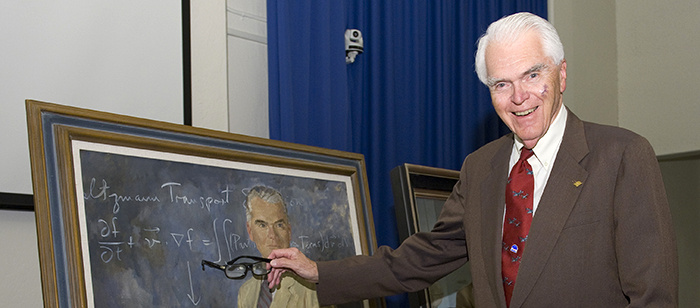
UMBC Center for Hybrid Multicore Productivity Research
Distinguished Computational Science Lecture Series
Tales of Scientific Computation at Ames and in NASA
Dr. Hans Mark
University of Texas Cockrell School of Engineering, Austin, TX
4:00pm Thursday, 22 May 2014, ITE 456, UMBC
This is personal story about how high performance computing was developed at the NASA-Ames Research Center and elsewhere in NASA. There were people at Ames who were first class aerodynamic scientists and who could use computers. Thus, it was decided that some procurement short cuts were justified. We acquired computers in three quantum steps. First, in 1969, there was an IBM duplex 360/67 which was captured by a “midnight supply operation” from the Air Force. Next, in 1972, the ILLIAC IV at the University of Illinois became available because of an act of domestic terrorism and financial help from DARPA. Finally in 1975, there was one of Seymour Cray’s CDC 7600s, also from an Air Force source. In 1981, by which time Seymour Cray had his own company, a Cray 1S appeared at Ames, followed in 1984 by CDC Cyber 205 and a Cray X-MP/22. The last named machines were made available because of shameless earmarking by NASA Headquarters. However, confession being good for the soul, the NASA-Goddard Space Flight Center also benefited from the earmarking with twenty million dollar fund to develop a truly massively parallel computer, the Goodyear MPP with 16,000 processors, which was delivered in 1984. Now we are working with people at Ames on a quantum computer manufactured by D‐Wave Systems, Inc. The machine was installed at Ames last year and we are now working on various “benchmark” tests and developing operating systems for the machine. We believe that there is great promise for much more capable computing machines in this new quantum technology.
Dr. Hans Mark is a leading expert in the fields of both aerospace design an national defense policy. For fourteen years Dr. Mark was associated with the University of California’s Nuclear Weapons Laboratory at Livermore, serving as Physics Division Leader from 1960 to 1964. He was named Under Secretary of the Air Force an Director of the National Reconnaissance Office in 1977. While Director of the National Reconnaissance Office, he initiated the development of a new reconnaissance satellite system an the upgrade of two others. As Secretary of the Air Force (1979 to 1981), Dr. Mark initiated the establishment of the U.S. Air Force Space Command. During his tenure as Deputy Administrator of NASA from 1981 to 1984, Dr. Mark oversaw the first fourteen Space Shuttle flights and was a leading contributor to the establishment of the U.S. Space Station Program. Over the past twenty years, Dr. Mark has served as Chancellor of the University of Texas System (1984 to 1992) and is still actively involved in research and teaching at the University of Texas Cockrell School of Engineering in Austin, TX. From 1998 to 2001, Dr. Mark was on leave from the University to serve in the Pentagon as Director of Defense Research and Engineering. Dr. Mark received an A.B. Degree in physics from the University of California, Berkeley and a Ph.D. in physics from the Massachusetts Institute of Technology (MIT). He has been member of the National Academy of Engineering for three years an holds six honorary doctorates.